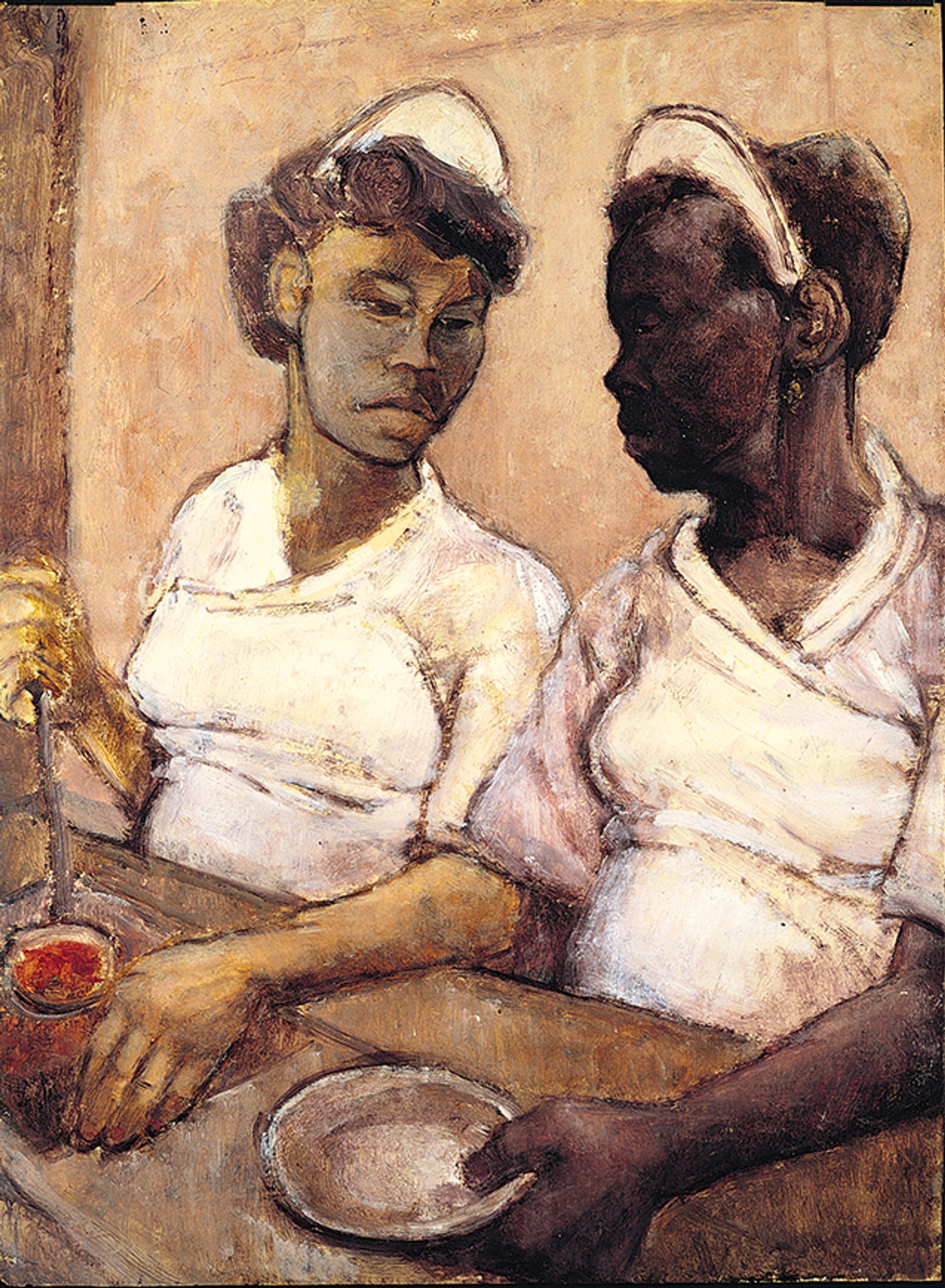“It was the aftermath of a global shock-trauma: loss of life on an unimaginable scale, displacement on an unimaginable scale. Artists were living in the shadow of the Second World War on the one hand, but on the other was a profound desire to shape something better.” The curator Jane Alison is talking about the defining sensibility of the work in a new exhibition, Postwar Modern: New Art in Britain 1945-65 at London’s Barbican Art Gallery. It is a show that focuses on a period that, in Alison’s view, has been unfairly overlooked. The war-exhausted Britain, she says, has been treated “as a backwater, not a lot happening, too conservative”. But there was a lot more happening than we think.
[After the war there] was a profound desire to shape something betterJane Alison, curator
Some of the names included in the exhibition will be familiar—Francis Bacon, Lucian Freud, Eduardo Paolozzi, all making early career strides—but some much less so. Among the lesser-known names are Eva Frankfurther, a Jewish refugee from Nazism; Francis Newton Souza, who co-founded the Bombay Progressive Artists’ Group; and Peter King, a sculptor and filmmaker who died tragically young in 1957. Alison says she specifically excluded significant figures who had made their names before the war, such as Henry Moore, Barbara Hepworth and Graham Sutherland. “Much as I love them, they were the establishment, and for me that wasn’t going to make for a very exciting exhibition.”

West Indian Waitresses (around 1955) by the German-Jewish émigré Eva Frankfurther Estate of Eva Frankfurther, photo: © Justin Piperger, courtesy Barbican Centre
The impact of the war permeates everything, Alison says. “The survivor, the injured, the disfigured body comes up again and again. There’s a hypervigilance in the work, a forensic attention to detail, as well as a plethora of ambiguous forms, an intense focus on bodily sensation.”
The curator points to the influence of the Independent Group in the 1950s, which included the Brutalist architects Alison and Peter Smithson who collaborated on the landmark Patio and Pavilion installation with Paolozzi, and who coined the phrase “rough poetry” that Alison suggests distilled the artistic spirit of the time. “I would argue that artists were uniquely placed to understand all this. There was a kind of amnesia at work in the rest of society after the war; people didn’t want to face what had happened. But artists, even if they didn’t want to, tapped into it. It comes through in the work, even if they are not consciously trying to do it.”

Sylvia Sleigh's The Bride (Lawrence Alloway) (1949) Photo: Tate
Alison says it was vital to integrate artists who had come to Britain—either as colonial migrants, such as Souza, or as wartime refugees—alongside other marginalised figures. She is particularly keen on a room that pairs Frankfurther, who turned her back on the art world, worked at a Lyons Corner House restaurant and made pictures of her co-workers and East End neighbours, with Shirley Baker, who photographed working class communities in Manchester as slum clearances rolled on. Another rarely seen exhibit is that of the then-transgressive “bride” portraits of critic Lawrence Alloway by Sylvia Sleigh (the two would later marry), which did not enter a public collection until after the latter’s death in 2010.
In terms of timing, Alison says the show could not be more apposite, with parallels between the pandemic and the war becoming ever more evident. “It’s a different type of crisis, but nonetheless it’s a crisis. Not perhaps in terms of magnitude, but the trauma and loss of faith in ideologies lends itself to a similar sense of instability, unease, anxiety. This was very much part of that moment.”
• Postwar Modern: New Art in Britain 1945-65, Barbican Art Gallery, London, 3 March-26 June


